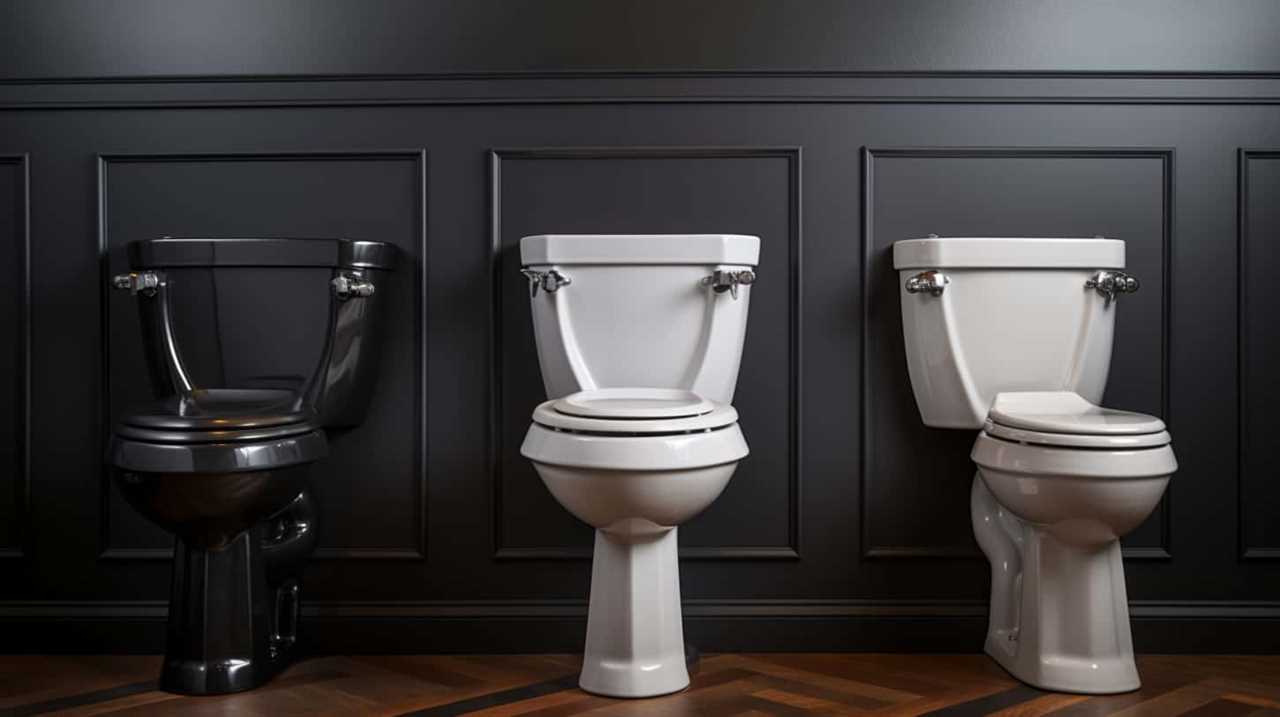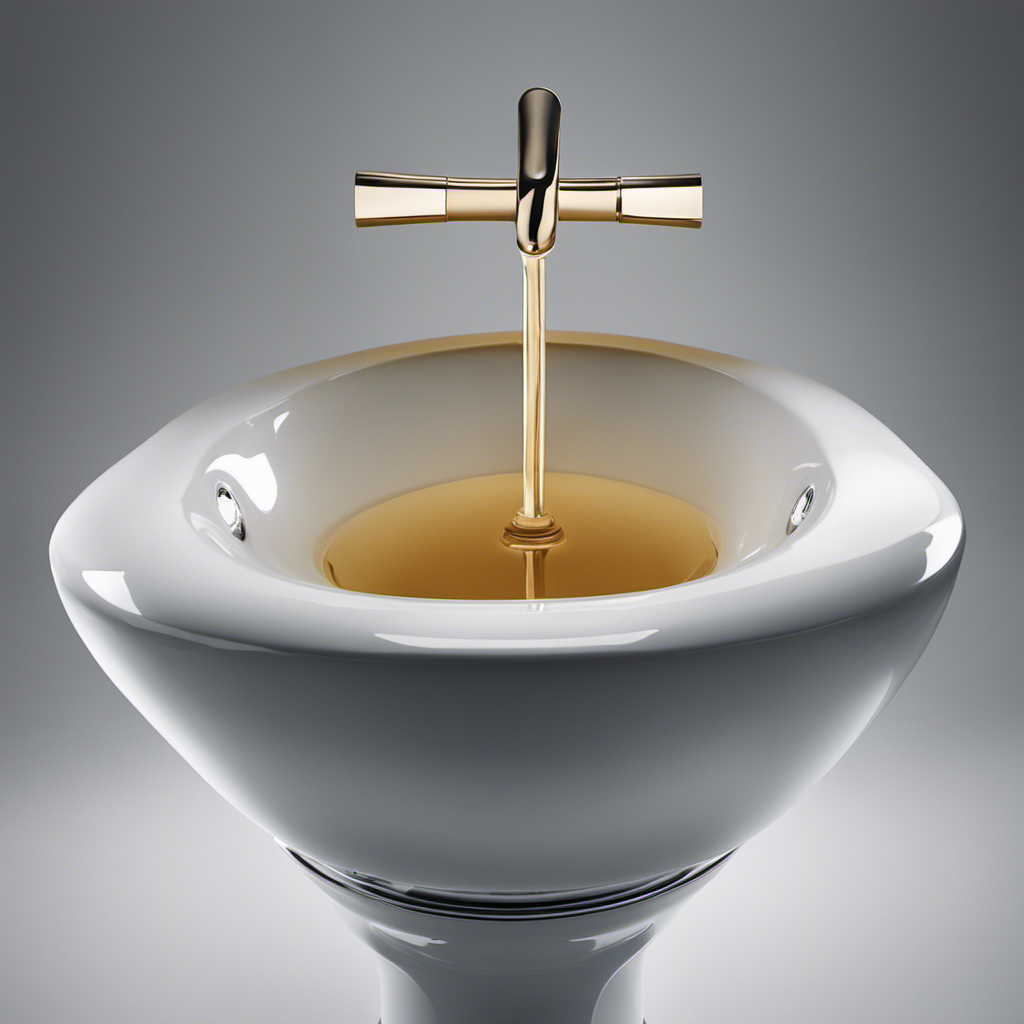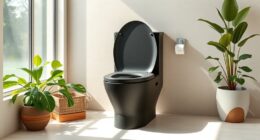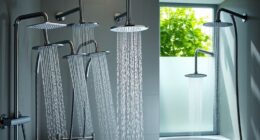We are here to explore the secrets of toilets with buttons on the top. Imagine this scenario: you are facing a stylish, contemporary toilet, and instead of the usual handle, there are two buttons beckoning you to adjust the settings.
But how exactly do they work? In this article, we’ll delve into the inner workings of these innovative toilets. From the placement of the buttons to the mechanism behind the flushing process, we’ll leave no stone unturned in our quest for knowledge.
Key Takeaways
- Buttons on the surface of the toilet tank are strategically placed for easy access and intuitive operation.
- Dual flush mechanism provides the options of full flush and half flush, allowing users to control water usage based on the type of waste.
- Button valve, a newer innovation, offers durability and requires less maintenance compared to the traditional flapper valve.
- The tank-to-bowl transfer process ensures efficient flushing and water conservation through a calibrated water release and siphoning effect.
Button Placement: Understanding the Location and Purpose
Understanding the location and purpose of button placement is essential when using toilets with buttons on top. The button design plays a crucial role in enhancing the user experience by providing easy access and intuitive operation. Typically, the buttons are strategically positioned on the surface of the toilet tank, allowing users to effortlessly operate them without any confusion.
The location ensures that the buttons are within reach, ensuring convenience for all users. Moreover, the purpose of button placement is to offer a seamless transition between different flushing options, such as the dual flush mechanism. By understanding the location and purpose of button placement, users can effectively control the water usage and make environmentally conscious choices.
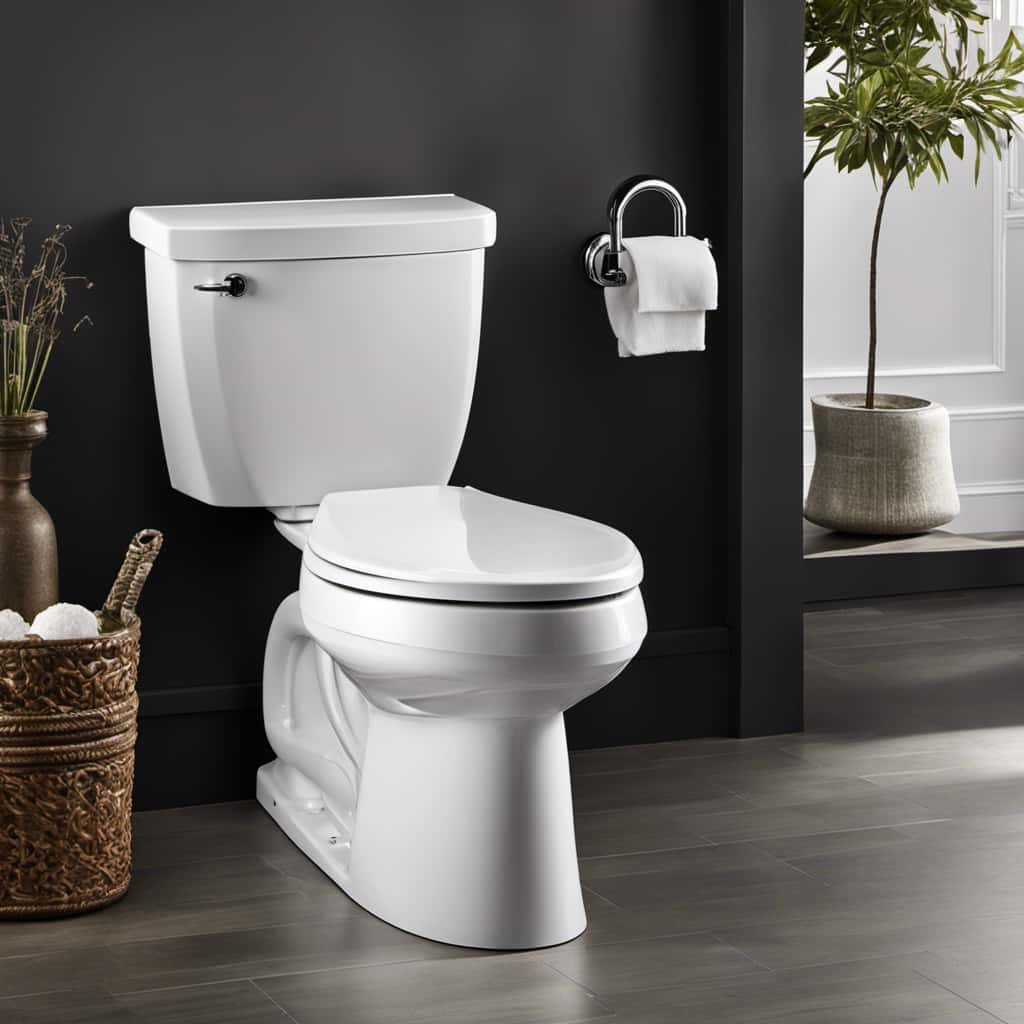
Now, let’s dive into the next section to explore the dual flush mechanism and how the buttons control water usage.
Dual Flush Mechanism: How the Buttons Control Water Usage
To continue our discussion from the previous subtopic, let’s explore how the buttons on top of toilets with buttons work to control water usage through the dual flush mechanism. This innovative toilet technology allows for efficient water conservation, a crucial aspect of sustainable living.
The dual flush mechanism utilizes two buttons, usually located on the top of the toilet tank, to provide users with two flushing options – a full flush and a half flush. The full flush button releases a larger amount of water, suitable for solid waste, while the half flush button releases a smaller amount of water, appropriate for liquid waste. By giving users the choice to use less water for certain types of waste, the dual flush mechanism promotes water conservation without compromising cleanliness.
Now, let’s explore the different types of valves used in these toilets: the flapper valve and the button valve.
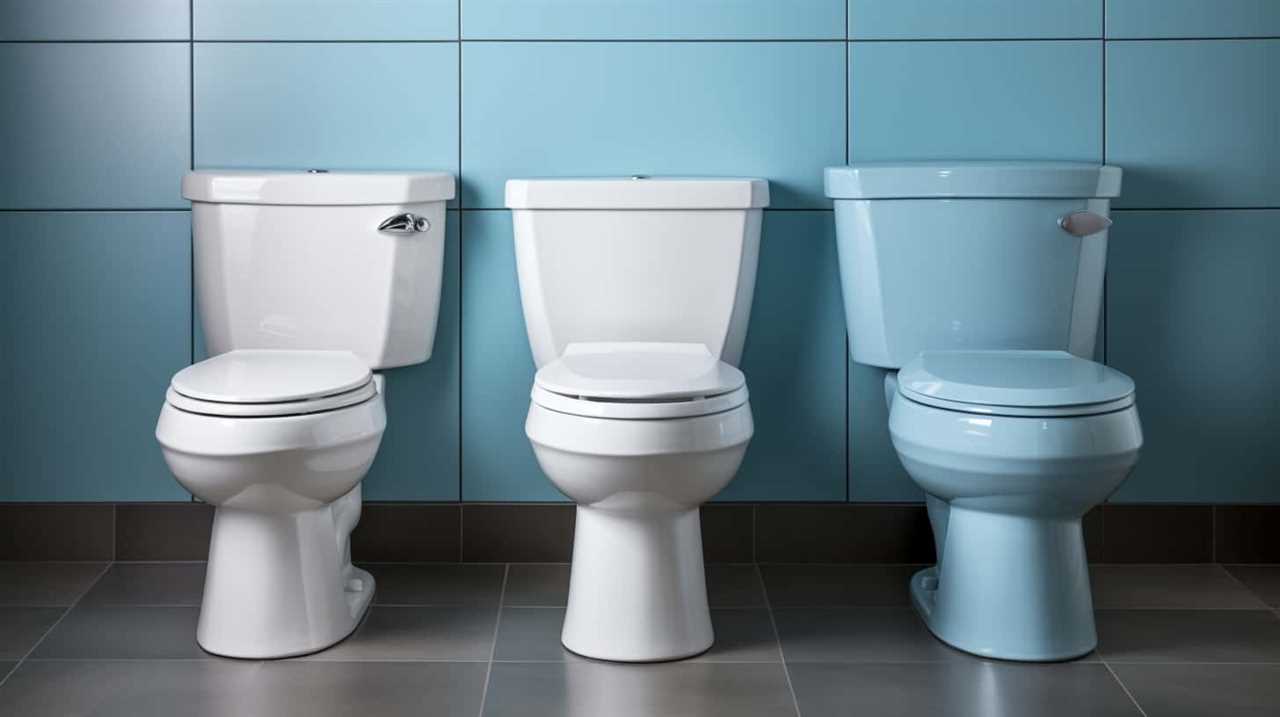
Now let’s delve into the different types of valves used in toilets with buttons on top: the flapper valve and the button valve.
The flapper valve is a traditional type of valve that controls the water flow in a toilet. It’s a rubber flap that covers the flush valve opening and is connected to a chain or rod that’s lifted when the flush button is pressed. Flapper valve maintenance involves regularly checking for wear and tear, replacing it if necessary, and ensuring it’s properly aligned to prevent leaks.
On the other hand, button valves are a newer innovation that offer several benefits. They’re typically more durable and require less maintenance than flapper valves. Additionally, button valves are often more precise in controlling water flow, allowing for more efficient flushing and water conservation.
Tank-to-Bowl Transfer: How Water Is Released for Flushing
Water is released for flushing in toilets with buttons on top through a process known as tank-to-bowl transfer. This mechanism ensures that the right amount of water is delivered to the toilet bowl to effectively remove waste.
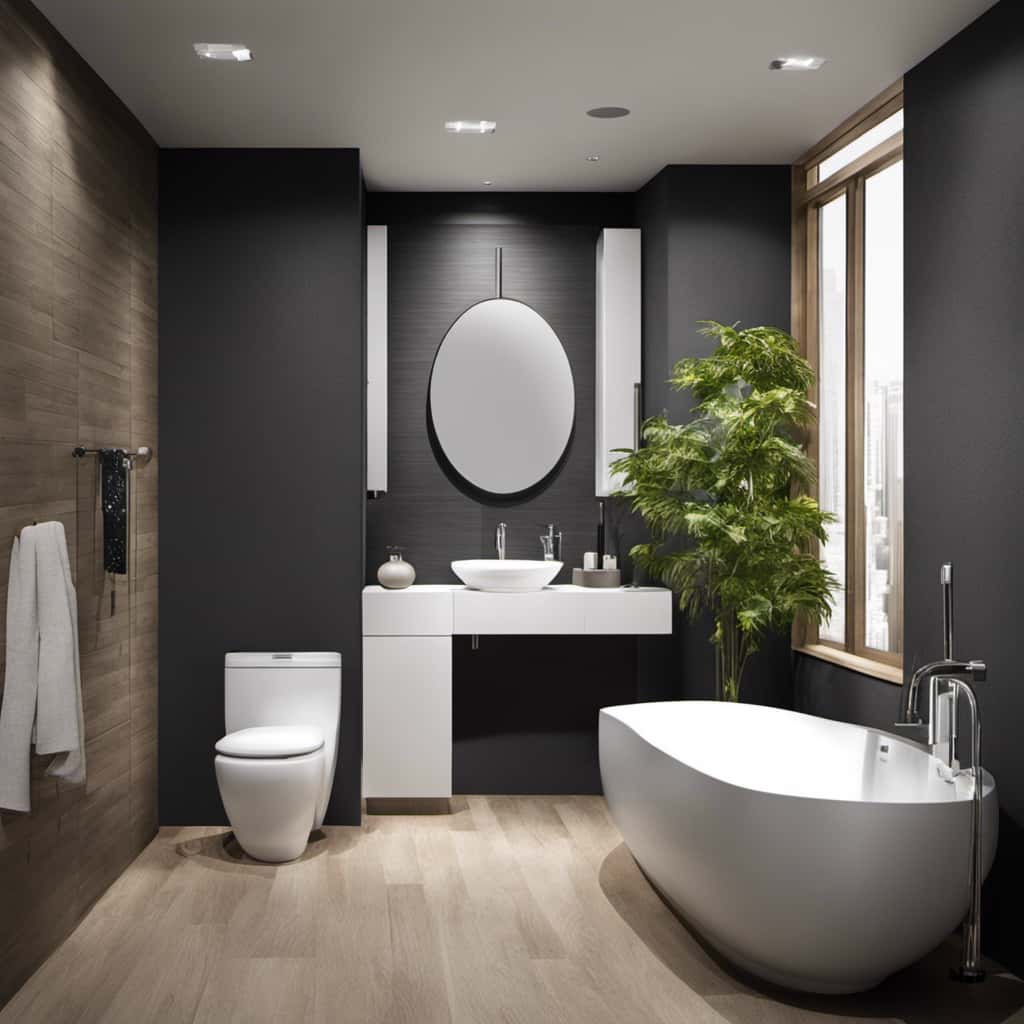
When the flush button is pressed, it activates a lever that lifts the flapper valve or button valve, allowing water from the tank to flow into the toilet bowl. The force of the water creates a siphoning effect, which helps to evacuate the contents of the bowl. The water release is carefully calibrated to ensure efficient flushing while conserving water.
Once the flushing process is complete, the flapper valve or button valve returns to its original position, sealing off the tank and preventing any further water from entering the bowl.
Now, let’s delve into the next section and explore the behind-the-scenes process of button actuation in the flushing process.
Button Actuation: Behind the Scenes of the Flushing Process
In toilets with buttons on top, a specific amount of water is released for flushing through a mechanism called button actuation. Button technology plays a crucial role in this process.

When the button is pressed, it activates a system that controls the release of water from the tank into the bowl. This system utilizes water pressure to create a force that propels the water downward, effectively flushing away waste and cleaning the bowl.
The amount of water released can be adjusted based on the user’s preference or the type of waste being flushed. The button actuation mechanism ensures a consistent and efficient flushing process, providing users with a reliable and convenient way to maintain cleanliness in their toilets.
Frequently Asked Questions
How Do Toilets With Buttons on Top Differ From Traditional Flush Toilets?
Toilets with buttons on top differ from traditional flush toilets as they incorporate a button mechanism installation and water-saving technology. This allows for more precise control over the amount of water used during each flush.
What Are the Benefits of Using a Dual Flush Mechanism?
Using a dual flush mechanism in toilets offers numerous benefits, such as water conservation and cost savings. By allowing users to choose between a full flush and a partial flush, water usage can be reduced without compromising functionality.
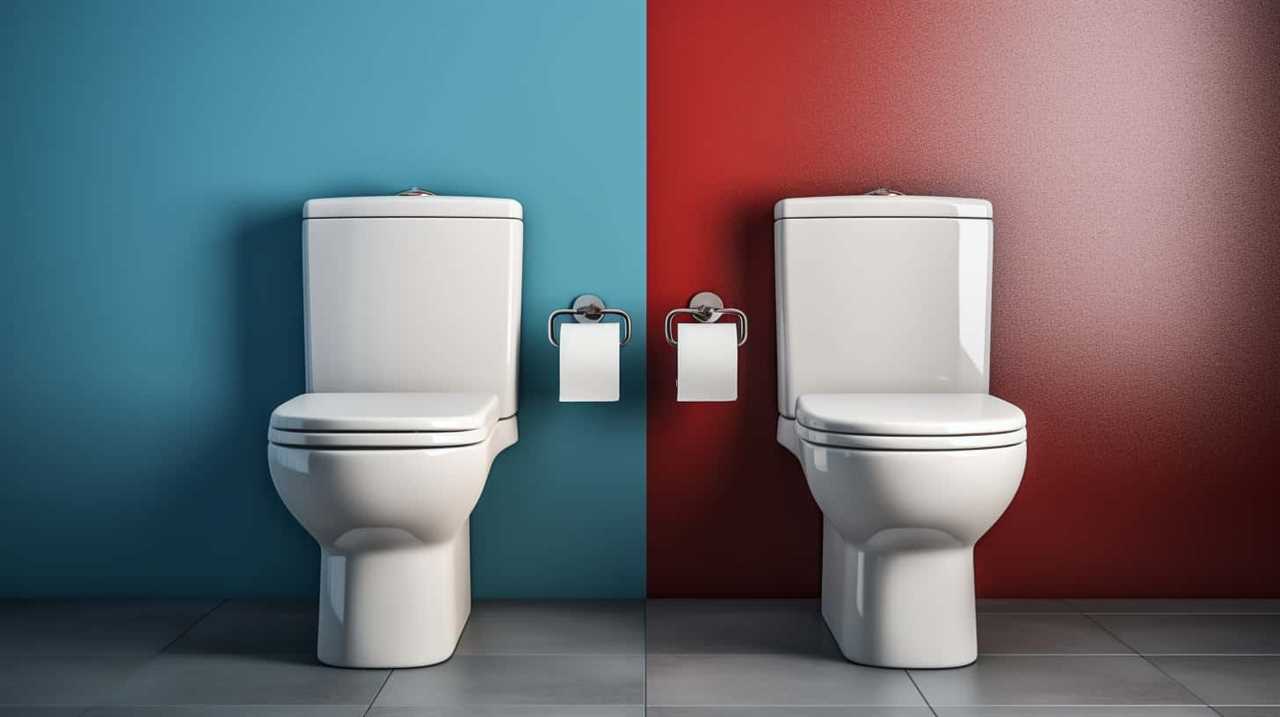
Can the Button Placement on Top of the Toilet Be Customized?
When it comes to the customization options for button placement on top of toilets, there are pros and cons to consider. It allows for easier access, but may require more effort to clean.
Are Toilets With Button Valves More Efficient Than Those With Flapper Valves?
Toilets with button valves offer greater efficiency compared to those with flapper valves. By utilizing water-saving technology, these toilets reduce toilet water consumption, making them an environmentally conscious choice.
How Does the Button Actuation Process Work in Toilets With Buttons on Top?
The button design evolution in toilets with buttons on top allows for easy actuation of different flushing options. This, combined with water-saving technology, ensures efficient water usage and a more environmentally friendly toilet system.
Conclusion
In conclusion, toilets with buttons on top offer a convenient and efficient way to control water usage. The dual flush mechanism allows users to choose between a full or partial flush, reducing water waste.
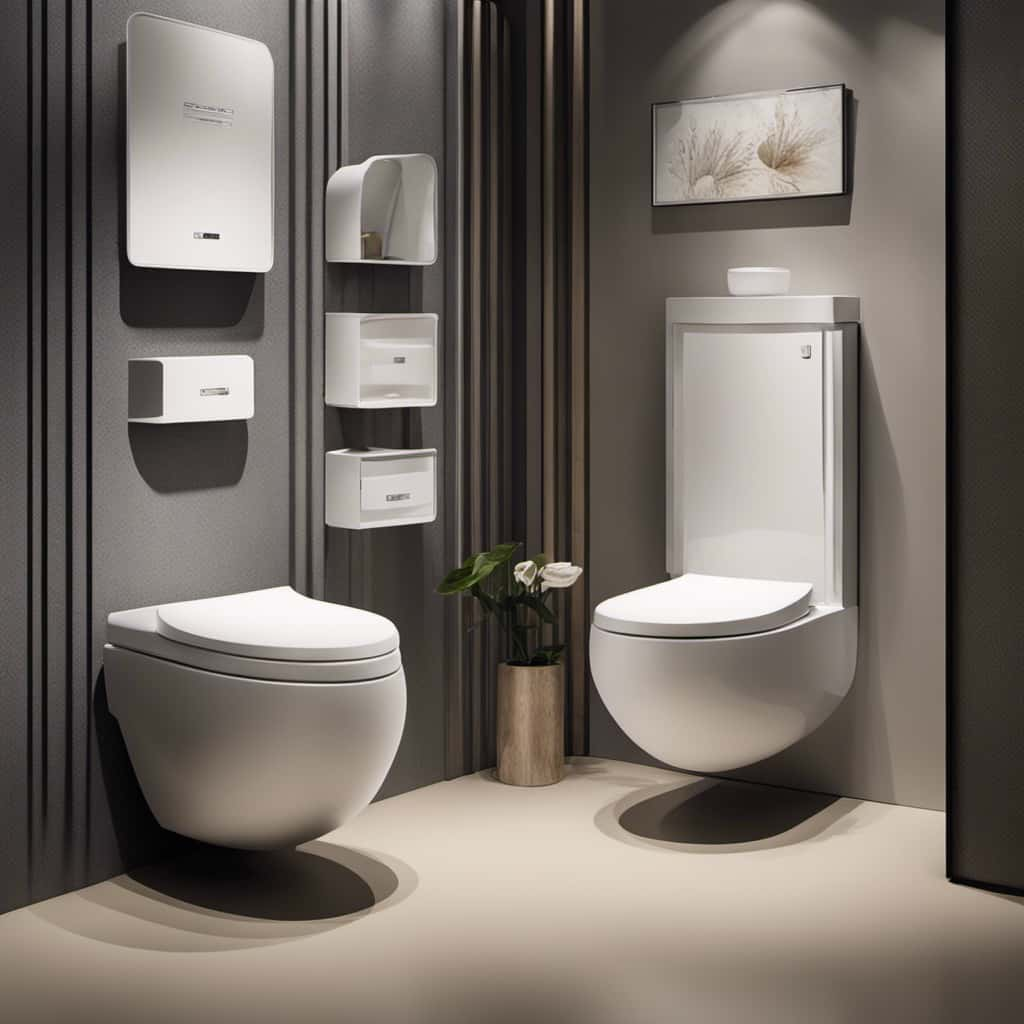
The different types of valves, whether flapper or button, ensure that water is released for flushing effectively. The button actuation process operates smoothly behind the scenes, providing a seamless flushing experience.
With these advanced features, toilets with buttons on top are a reliable and eco-friendly choice for any bathroom.




